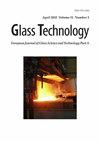加纳komfo anokye放射治疗中心钴-60单元辐射剂量率水平和辐射风险评估。
IF 0.3
4区 材料科学
Q4 MATERIALS SCIENCE, CERAMICS
Glass Technology-European Journal of Glass Science and Technology Part a
Pub Date : 2021-12-17
DOI:10.47672/ejt.877
引用次数: 0
摘要
目的:进行了一项研究,以估计在加纳Komfo Anokye教学医院(KATH)放射治疗设施内产生电离辐射水平的人工钴-60放射源的存在所引起的年有效剂量当量(AEDE)和超额终身癌症风险(ELCR)。这项研究验证了钴-60放射源的安全性,以及计算年有效剂量当量(AEDE)和超额终身癌症风险(ELCR)的概念,这有助于减少设施内的职业和公众暴露。方法:采用便携式OD-01电离室测量仪进行调查。空气中的吸收剂量率(ADR)在5米至40米之间变化,测量是在钴60掩体内部和周围以及辐射设施内的其他16个地点进行的。结果:在钴-60源周围5 ~ 40 m范围内,钴-60掩体内空气的估计吸收剂量率范围为0.299 0.001 ~ 0.977 0.005 Sv/h,平均为0.498 0.005 Sv/h。在钴-60掩体内的钴-60源周围,估计的年有效剂量当量从1.100毫西弗/年到3.595毫西弗/年不等。辐射暴露水平范围为0.268 0.008西沃特/小时至0.678 0.005西沃特/小时,在选定的15个地点周围观测到的平均辐射暴露水平为0.440 0.004西沃特/小时。超额寿命癌的取值范围从3.85 10-3到12.58 10-3和3.45 10-3到8.73 10-3。对钴和工厂内16个地方的风险进行了评估。Co-60掩体内5米、10米和15米处的吸收剂量值以及作为设施一部分的Co-60掩体的位置超过了icrp建议的0.57的限值。AEDE和ELCR水平在ICRP的可接受范围内。获得的AEDE和ELCR统计数据表明,钴-60装置及其周围环境是辐射安全的,尽管雇员一生中因吸收剂量和本底电离辐射而患癌症的可能性很大。建议:但是,建议对放射治疗技师(RTT)和单位周围其他工作人员的吸收剂量水平监测和评估进行定期监测。还建议职业人员,如rtt,尽可能少地呆在地堡里本文章由计算机程序翻译,如有差异,请以英文原文为准。
ASSESSMENT OF RADIATION DOSE RATE LEVELS AND RADIATION RISK AT THE COBALT -60 UNIT, KOMFO ANOKYE RADIOTHERAPY CENTER, GHANA.
Purpose: A study was conducted to estimate the Annual Effective Dose Equivalent (AEDE) and Excess Lifetime Cancer Risk (ELCR) caused by the presence of an artificial cobalt-60 radioactive source producing ionizing radiation levels within the radiotherapy facility at Komfo Anokye Teaching Hospital (KATH) in Ghana. This study validated the safety of cobalt-60 radioactive sources, as well as the notion of calculating the Annual Effective Dose Equivalent (AEDE) and Excess Lifetime Cancer Risk (ELCR), which contributed to reducing occupational and public exposures inside the facility.
Methodology: The investigation was carried out with the use of a portable OD-01 Ionization Chamber Survey Meter. The absorbed dose rate (ADR) in air was changed between 5 m and 40 m, with measurements taken inside and around the cobalt 60 bunker, as well as at sixteen other sites within the radiation facility.
Findings: From 5 m to 40 m surrounding the Cobalt-60 source, the estimated Absorbed Dose Rate in air inside the cobalt-60 bunker ranged from 0.299 0.001 to 0.977 0.005 Sv/h, with an average of 0.498 0.005 Sv/h. The estimated Annual effective dose equivalent varied from 1.100 mSv/yr to 3.595 mSv/yr around the cobalt-60 source inside the Co-60 bunker. Radiation exposure levels ranged from 0.268 0.008 Sv/h to 0.678 0.005 Sv/h, with an average of 0.440 0.004 Sv/h observed around the fifteen sites chosen. Excess Lifetime Cancer has values ranging from 3.85 10-3 to 12.58 10-3 and 3.45 10-3 to 8.73 10-3. Risks were evaluated for the cobalt and the sixteen places inside the plant. The absorbed dose values at 5 m, 10 m, and 15 m inside the Co-60 bunker and the location Co-60 bunker as part of the facility exceeded the ICRP-recommended limit of 0.57. The AEDE and ELCR levels were within the ICRP's acceptable limits. The AEDE and ELCR statistics acquired indicate that the Cobalt-60 unit and its surroundings are radiation safe, although the likelihood of employees contracting cancer from the absorbed dose and background ionizing radiation is significant over a lifetime.
Recommendation: However, it is recommended that absorbed dose level monitoring and evaluation of the Radiation Therapy Technologist (RTT) and other workers surrounding the unit be monitored on a regular basis. It is also recommended that Occupational Staff, such as RTTs, spend as little time as possible in the bunker
求助全文
通过发布文献求助,成功后即可免费获取论文全文。
去求助
来源期刊
CiteScore
0.30
自引率
0.00%
发文量
0
审稿时长
>12 weeks
期刊介绍:
The Journal of the Society of Glass Technology was published between 1917 and 1959. There were four or six issues per year depending on economic circumstances of the Society and the country. Each issue contains Proceedings, Transactions, Abstracts, News and Reviews, and Advertisements, all thesesections were numbered separately. The bound volumes collected these pages into separate sections, dropping the adverts. There is a list of Council members and Officers of the Society and earlier volumes also had lists of personal and company members.
JSGT was divided into Part A Glass Technology and Part B Physics and Chemistry of Glasses in 1960.

 求助内容:
求助内容: 应助结果提醒方式:
应助结果提醒方式:


